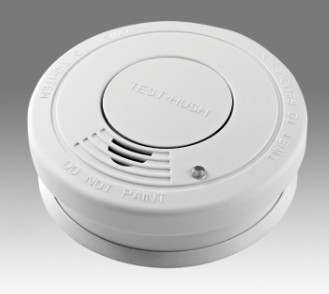Classic smoke alarms typically cannot differentiate bet […]
Classic smoke alarms typically cannot differentiate between various types of smoke. Traditional ionization and photoelectric smoke detectors are designed to detect the presence of smoke particles in the air, regardless of the source or type of smoke. These detectors are primarily sensitive to the presence of particulate matter in the air, such as those produced by smoldering fires or flaming fires.
Ionization smoke detectors contain a small amount of radioactive material that ionizes the air between two electrically charged plates. When smoke particles enter the ionization chamber, they disrupt the ionization process, triggering the alarm. These detectors are more responsive to fast-flaming fires that produce small smoke particles.

On the other hand, photoelectric smoke detectors use a light source and a light-sensitive sensor. When smoke enters the chamber, it scatters the light, causing it to be directed towards the sensor, which then triggers the alarm. Photoelectric detectors are more sensitive to slow, smoldering fires that produce larger smoke particles.
While both types of smoke detectors are effective at detecting smoke and issuing an alarm, they do not differentiate between the sources of smoke or the types of materials burning. Therefore, they cannot distinguish between various types of smoke, such as smoke from cooking, burning toast, or a smoldering electrical fire. As a result, false alarms can occur in situations where smoke or steam is present but does not pose a significant fire hazard.
However, there are advanced smoke detection technologies, such as multi-criteria detectors, which combine ionization and photoelectric sensing capabilities with additional features to improve smoke detection accuracy and reduce false alarms. These detectors may incorporate features such as temperature sensing, carbon monoxide detection, or advanced algorithms to better differentiate between smoke from various sources and reduce false alarms.